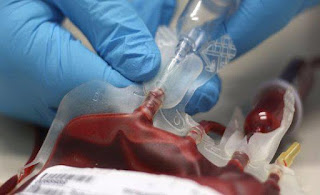Clearing the Path: Understanding the Mechanisms of Antihyperlipidemic Drugs
Introduction:
In the battle against cardiovascular diseases, hyperlipidemia, or high levels of lipids (fats) in the blood, stands as a formidable opponent. Uncontrolled hyperlipidemia can lead to atherosclerosis, a condition where fatty deposits accumulate in the arteries, potentially leading to heart attacks and strokes. Fortunately, medical science offers a potent weapon in the form of antihyperlipidemic drugs, which work tirelessly to clear the path and maintain heart health. In this blog, we will explore the fascinating mechanisms of these medications and their role in combating hyperlipidemia.
Understanding Hyperlipidemia:
Hyperlipidemia is primarily characterized by elevated levels of cholesterol and triglycerides in the blood. These lipids are essential for various bodily functions but can become detrimental when present in excess. Dietary habits, genetics, and lifestyle factors can contribute to the development of hyperlipidemia, putting individuals at risk of cardiovascular complications.
The Role of Antihyperlipidemic Drugs:
Antihyperlipidemic drugs are a class of medications designed to lower lipid levels in the blood and prevent or slow down the progression of atherosclerosis. These drugs primarily target cholesterol, specifically low-density lipoprotein (LDL) cholesterol, often referred to as "bad" cholesterol, and triglycerides. By reducing these lipids, antihyperlipidemic drugs aim to promote cardiovascular health and decrease the risk of cardiovascular events.
The Mechanisms of Action:
HMG-CoA Reductase Inhibitors (Statins):
Statins are among the most commonly prescribed antihyperlipidemic drugs. They work by inhibiting an enzyme called HMG-CoA reductase, which plays a key role in the synthesis of cholesterol in the liver. By blocking this enzyme, statins reduce LDL cholesterol production, effectively lowering its levels in the bloodstream.
Fibrates:
Fibrates primarily target triglycerides and help increase levels of high-density lipoprotein (HDL) cholesterol, often referred to as "good" cholesterol. Fibrates activate an enzyme called lipoprotein lipase, which breaks down triglycerides, leading to a decrease in their levels.
Bile Acid Sequestrants:
These drugs work in the intestines by binding to bile acids, which are essential for cholesterol absorption. By sequestering bile acids, these medications disrupt the recycling process, leading to increased cholesterol elimination from the body.
PCSK9 Inhibitors:
PCSK9 inhibitors are a relatively newer class of antihyperlipidemic drugs. They target a protein called PCSK9, which plays a role in the degradation of LDL receptors in the liver. By inhibiting PCSK9, these drugs enhance the clearance of LDL cholesterol from the bloodstream.
Conclusion:
Antihyperlipidemic drugs play a vital role in maintaining heart health by effectively lowering cholesterol and triglyceride levels, mitigating the risks associated with hyperlipidemia. Each class of these medications utilizes unique mechanisms to clear the path and promote a healthier cardiovascular system. However, it's crucial to remember that lifestyle modifications, including a balanced diet and regular exercise, complement the benefits of these drugs. Consultation with a healthcare professional is essential to determine the most suitable antihyperlipidemic drug and develop a comprehensive plan to protect heart health for the long term.




Comments
Post a Comment